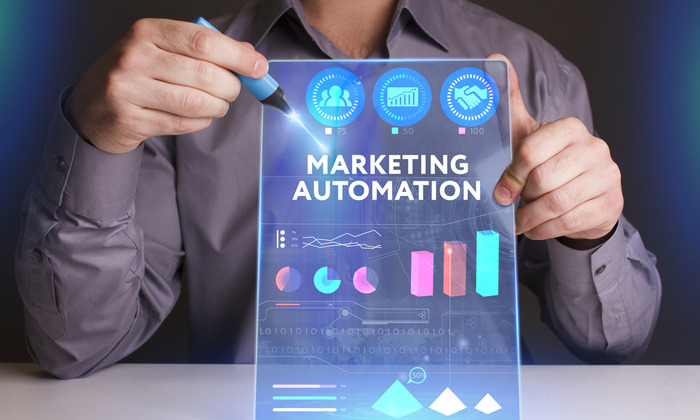The 17 Best Marketing Automation Tools Available to You

By iamalexbirkett@gmail.com (Alex Birkett)
A majority of businesses use marketing automation tools nowadays — in fact, studies cite around 56% of businesses currently use the technology, and that number continues to grow.
While marketing automation software can help companies increase efficiency by streamlining their workflows, there are so many options to choose from, full of different solutions with various features and use cases.
In this article, we’ll cover:
- What are marketing automation tools?
- How to Choose the Best Marketing Automation Software
- Marketing Automation Software Options to Consider
What are marketing automation tools?
Marketing automation tools use software to automate repetitive marketing tasks. Some platforms only offer email actions, drip sequences, and CRM updates. Others may help with lead scoring, sales lead rotation, SMS, and more.
Automating your marketing tasks can benefit your business by increasing overall efficiency and allowing you more time to work on high-level projects. For example, you can use marketing automation tools to collect valuable data that can be used to create more personalized marketing campaigns and increase conversion rates.
How to Choose the Best Marketing Automation Software
A more niche marketing automation product may be better for SMB and B2C environments, but B2B and enterprise companies may need a platform with wider capability. Here are some key areas to consider as you evaluate marketing automation software products to choose the one that’s right for you:
1. Determine Your Budget and Business Needs
If automation’s benefit can be summed up with one statement, it’s this: It will make you more efficient so you can focus on the tasks you enjoy and that have the highest return. With that in mind, you’ll want to evaluate price as you consider capability.
For SMBs and B2C organizations focusing primarily on email, a scaled-down system might be sufficient. However, with more advanced needs, enterprise (and thus higher ticket) software is more cost-efficient in the long run.
Be sure to choose a provider that’s reasonably priced but can also grow with you as your needs change. After all, reducing bloated operations is critical to scaling effectively.
2. Evaluate the Software’s Ease of Use
Automation isn’t a simple thing to implement, so make sure the interface of the software will work with you, not against you. See if you can find screenshots of the UX so you can determine if it looks simple and easy to navigate.
Automation can be technical, so look for providers that have robust knowledge bases, tutorials, and other customer support options.
3. Explore Analytics and Reporting Options
You’ll want to be able to measure the success of any drip campaigns you have running, so make sure your automation software will keep track of the metrics that matter most to you.
In B2B and enterprise environments with many stakeholders, you may also need advanced reporting abilities such as personalized dashboards or automatic reporting via email.
4. Research Integrations
How well does the marketing automation software play with your existing stack? …read more
Source:: HubSpot Blog









